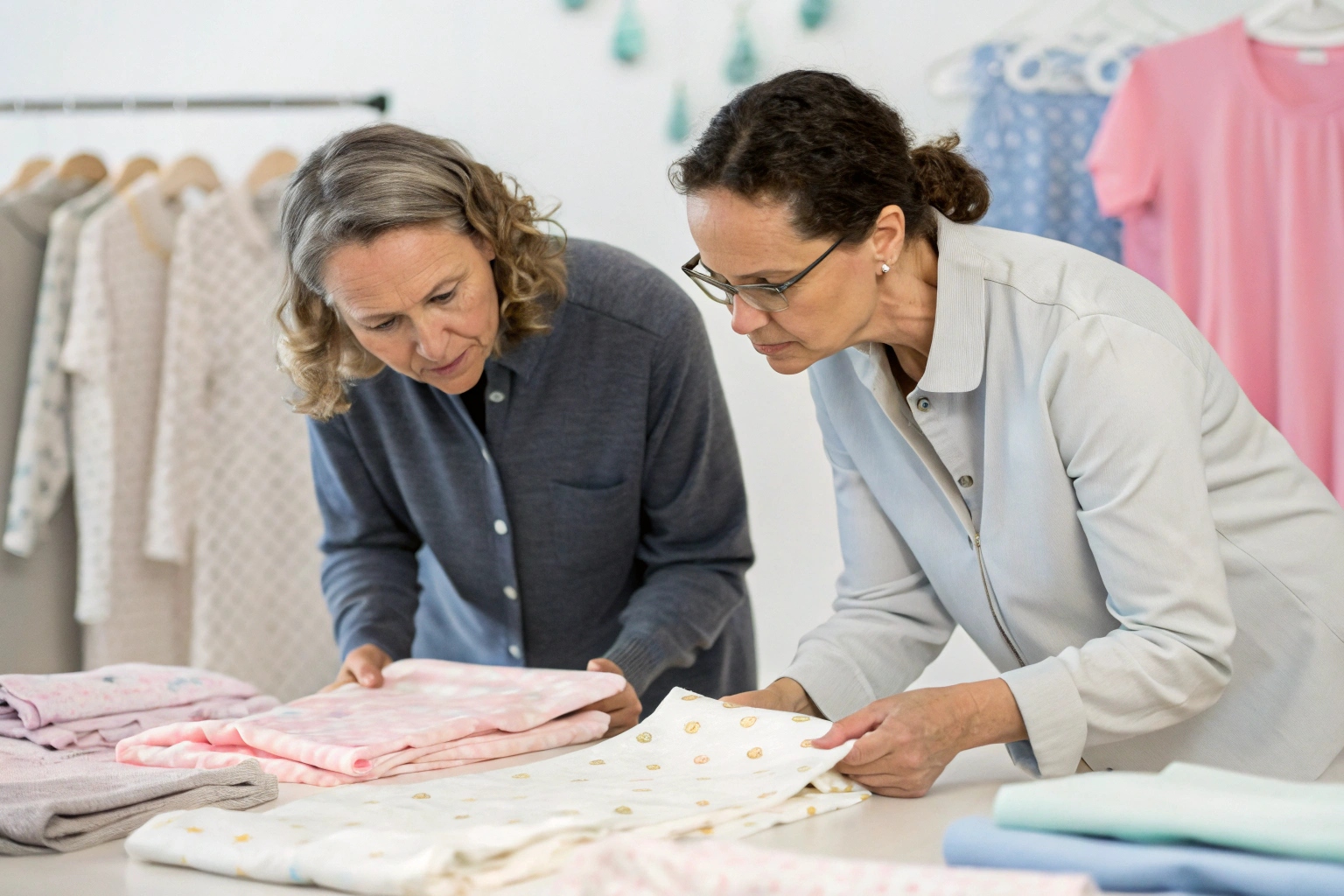Newborns have extra-sensitive skin and tiny bodies—so even the smallest design detail can make a big difference.
Truly safe baby clothing uses soft, certified fabrics, avoids harsh seams or choking hazards, and follows strict safety standards designed for infants.
In this article, we break down how to identify or produce babywear that’s not only cute—but completely safe for newborns.
What Fabrics Are Safest for Newborn Baby Clothes?
Fabric is the first thing that touches a baby’s skin—and it should be soft, breathable, and free from any chemicals or rough textures.
The safest fabrics for newborn clothing are natural, breathable, and certified for chemical safety—like organic cotton, bamboo, and OEKO-TEX® certified knits.
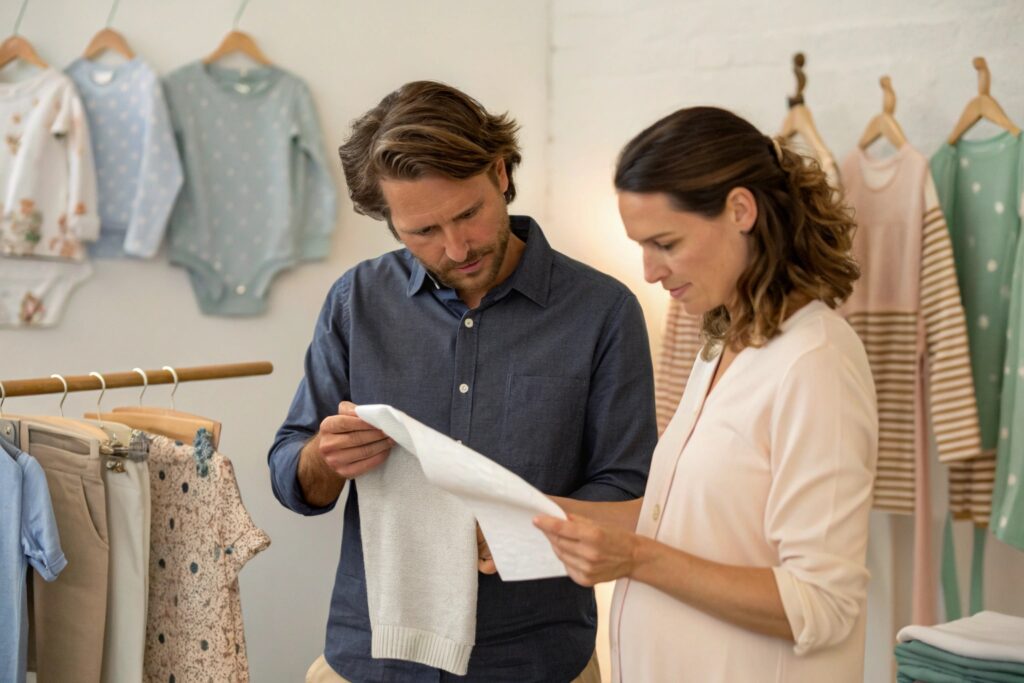
What fabrics are recommended for newborn safety?
| Fabric Type | Why It’s Safe for Newborns |
|---|---|
| Organic cotton | Grown without pesticides; soft, hypoallergenic |
| OEKO-TEX® cotton | Certified free of harmful substances |
| Bamboo viscose | Naturally soft and moisture-wicking |
| Muslin cotton | Lightweight, breathable, gentle on skin |
Avoid:
- Rough synthetics (e.g., polyester fleece with stiff backing)
- Fabrics with glitter, metallics, or chemical finishes
- Non-certified dyed fabrics that may bleed or irritate
How do you check fabric safety as a parent or buyer?
- Look for tags that say “OEKO-TEX® Standard 100” or “GOTS Certified”
- Avoid overly stiff or scratchy fabric
- Smell the fabric—chemical odors can signal unsafe dyes
- Read labels: 100% cotton or bamboo blends are ideal
At Fumao, we use only OEKO-TEX® certified materials for our newborn clients—and many brands also request organic options for premium safety.
Why Seam Construction and Stitching Matter for Infants?
Even if the fabric is soft, rough seams or poor stitching can cause redness, irritation, or worse—scratches and discomfort.
Newborn-safe clothing uses smooth seams, secure stitching, and tag-free or flat label placement to prevent skin irritation.
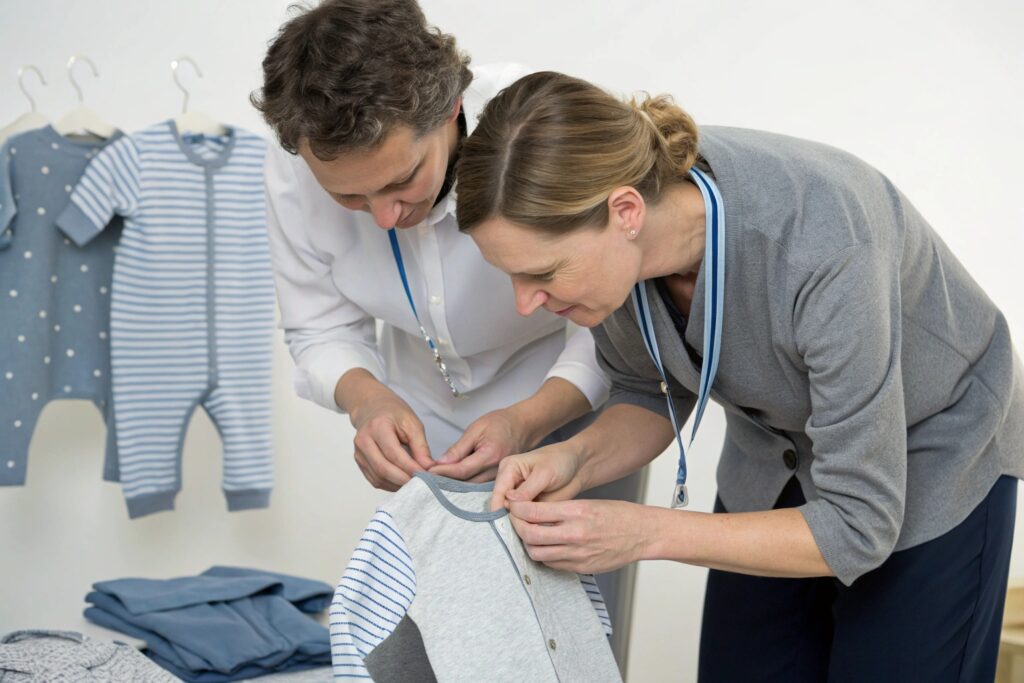
What sewing methods are safest for baby clothes?
| Stitching Detail | Why It Matters |
|---|---|
| Flat seams | Prevent pressure or scratching on the skin |
| Enclosed seams | Hide rough thread ends |
| Overlock with soft thread | Gentle finish on knitwear |
| Tagless labels or printed care info | No irritation on neck or waistlines |
Infants often lie on their backs or sides for long periods—so any seam on the shoulder, neck, or back should be as soft and smooth as possible.
What to watch for in stitching safety?
- Loose threads near snaps or necklines (can wrap around fingers)
- Unfinished overlock ends that unravel in the wash
- Seams that bunch or twist when stretched
- Care labels sewn directly into seams (can irritate)
We always inspect babywear with a hand-feel and wear-test process to ensure seams stay smooth after multiple washes.
How to Check for Choking Hazards in Babywear?
Snaps, buttons, zippers, and decorations might look cute—but if they’re not secured properly, they can pose real risks to newborns.
To avoid choking hazards, all trims on babywear must be securely attached, pass pull tests, and avoid small parts that can detach.
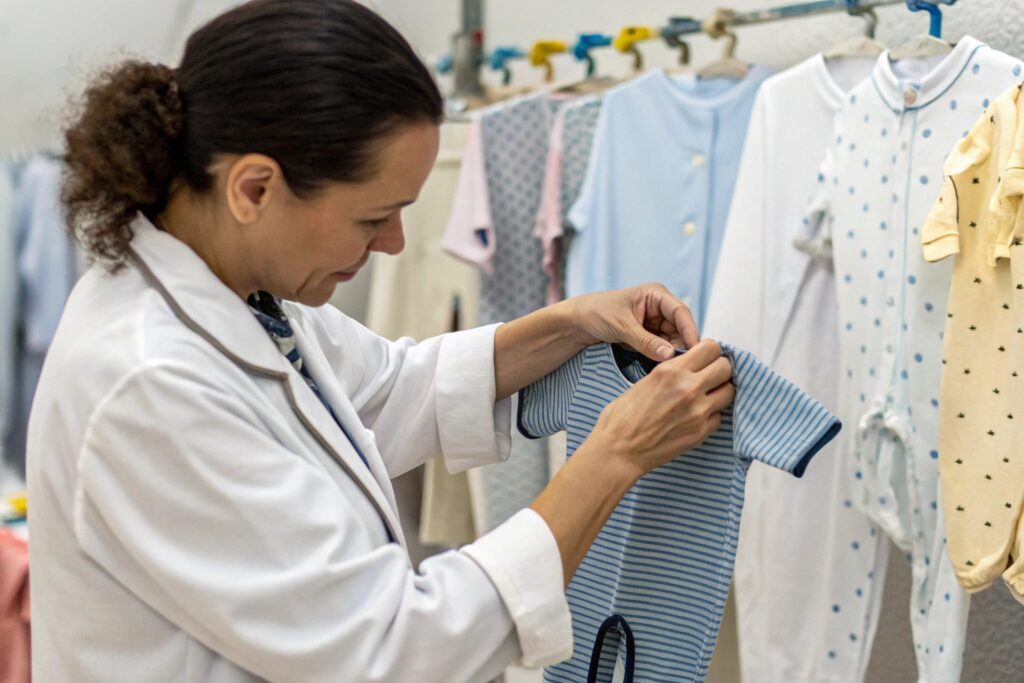
What are common choking risks in baby clothing?
| Hazard Type | Risk Description |
|---|---|
| Loose snaps or buttons | May detach and become a choking hazard |
| Decorative beads or sequins | Can be pulled off during wear |
| Drawstrings or cords | Risk of strangulation or entanglement |
| Unsecured bows or patches | Can detach during washing or use |
In the U.S., the CPSC (Consumer Product Safety Commission) requires babywear to pass small parts testing and snap strength verification—especially for infants under 3.
How do we prevent choking risks in our babywear production?
- We use industrial snap testing machines for every batch
- We avoid using small decorative parts unless stitched and fused
- We offer embroidered graphics instead of printed patches or glued appliqués
- We inspect all closures during and after sewing, before packing
Our trim suppliers are also OEKO-TEX® and CPSIA certified, ensuring safety from sourcing to finished product.
What Safety Certifications Should Baby Clothes Have?
A product might look safe—but without proper testing and documentation, it may not be legally allowed to sell in regulated markets.
Safe baby clothing must meet CPSIA requirements in the U.S., and should be certified by OEKO-TEX® or GOTS to confirm it’s free from harmful chemicals.
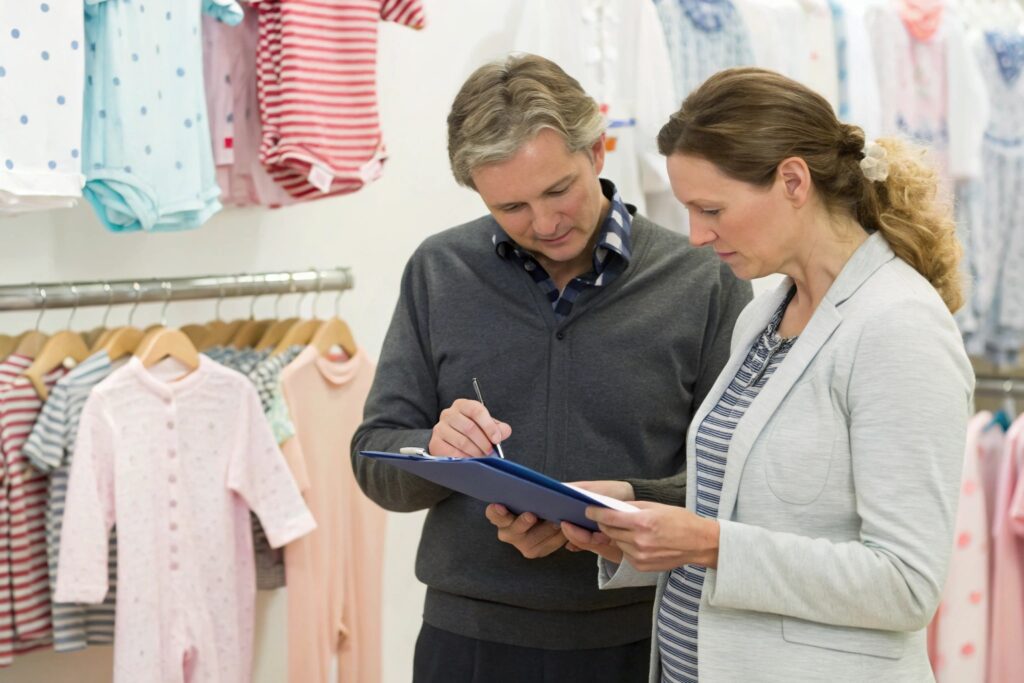
What certifications should brands and parents look for?
| Certification | What It Confirms |
|---|---|
| CPSIA (U.S.) | Lead-free, safe trims, tracking labels |
| OEKO-TEX® Standard 100 | Tested for 100+ harmful substances |
| GOTS (Global Organic Textile Standard) | Organic and ethically made |
| EN 14682 (EU) | No drawstrings or strangulation risks |
Every babywear product sold in the U.S. must include:
- A CPSIA-compliant tracking label
- Documentation of lead-free snaps and materials
- Flammability compliance (for sleepwear)
We prepare a full compliance folder with every order—including fabric certificates, snap test reports, and tracking label templates for our brand partners.
How can parents double-check safety?
- Look for certification logos on hangtags or product pages
- Ask for fabric certification or testing documentation if unclear
- Avoid unknown brands with no clear safety info or contact details
- Stick with trusted brands that share sourcing and compliance openly
Babywear safety isn’t a guessing game—it’s a documented, tested process from fabric to final fold.
Conclusion
Safe baby clothing starts with soft, certified fabrics and continues through every detail—seams, snaps, and stitching. Whether you're a parent or a brand, knowing what makes newborn clothes safe can help protect what matters most.

